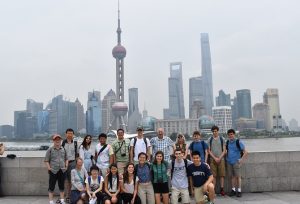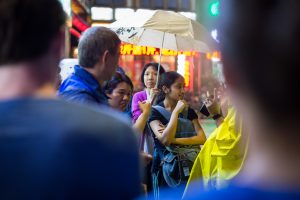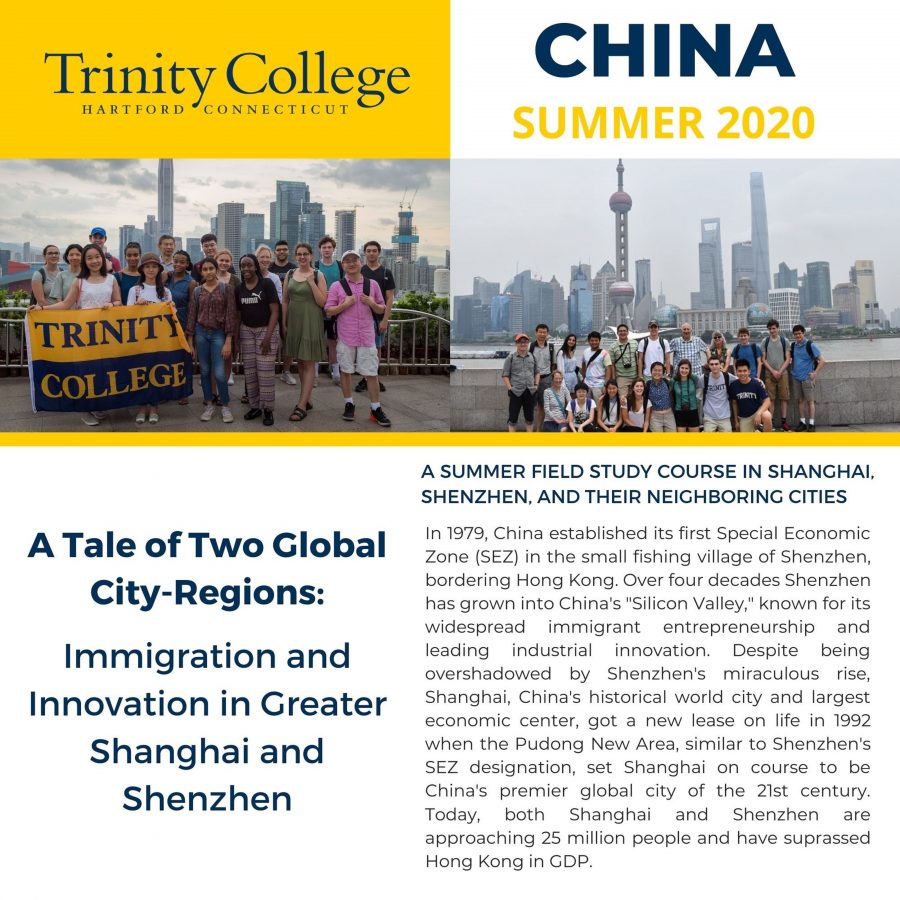The 2020 field course in China has been cancelled due to the coronavirus.
The Center for Urban and Global Studies will run its field course in China for the 12th year in June 2020.
This year’s trip will focus on “A Tale of Two Global City-Regions: Immigration and Innovation in Greater Shanghai and Shenzhen.” Students will earn 1.0 credits enrolled in URST/INTS 313.
In 1979, China established its first Special Economic Zone (SEZ) in the small fishing village of Shenzhen, bordering Hong Kong. Over four decades Shenzhen has grown into China’s “Silicon Valley,” known for its widespread immigrant entrepreneurship and leading industrial innovation. Despite being overshadowed by Shenzhen’s miraculous rise, Shanghai, China’s historical world city and largest economic center, got a new lease on life in 1992 when the Pudong New Area, similar to Shenzhen’s SEZ designation, set Shanghai on course to be China’s pr emier global city of the 21st century. Today, both Shanghai and Shenzhen are approaching 25 million people and have suprassed Hong Kong in GDP.
emier global city of the 21st century. Today, both Shanghai and Shenzhen are approaching 25 million people and have suprassed Hong Kong in GDP.
In summer 2020, under the aegis of the Center for Urban and Global Studies (CUGS), in collaboration with Fudan University in Shanghai and Shenzhen University, and with financial support from the Thomas China Urban Research and Teaching Endowment, Trinity College will launch a new field study course in Shanghai and Shenzhen. The course will focus on the dual and coupled themes of immigration and innovation.
Immigration and innovation are the twin drivers of dynamic and sustainable cities. Immigration creates a diverse and vibrant entrepreneurial spirit and activities that lead to new and innovative ideas, organizations, and products, which in turn enrich and improve cities.
During China’s rapid urbanization, Shanghai and Shenzhen are a pair of the most dramatic and illustrative cities where immigration and innovation have interacted differently in driving growth and transformation.



Since immigration and innovation in both Shenzhen and Shanghai have spilled into the surrounding lower-tier cities and peri-urban places, we will include Chongming Island near Shanghai and Dongguan and Shunde near Shenzhen as comparative cases for studying immigrant and innovation connections between two global mega-cities and their fully linked regional hinterlands.
For questions related to the application or logistics, please contact: Gabby Nelson, [email protected], Program Coordinator, Center for Urban and Global Studies
For questions related to academics, please contact: Xiangming Chen, [email protected], Paul E. Raether Distinguished Professor of Global Urban Studies and Sociology
For more information and applications, click here.

